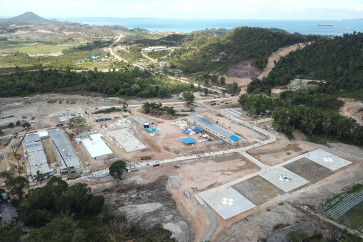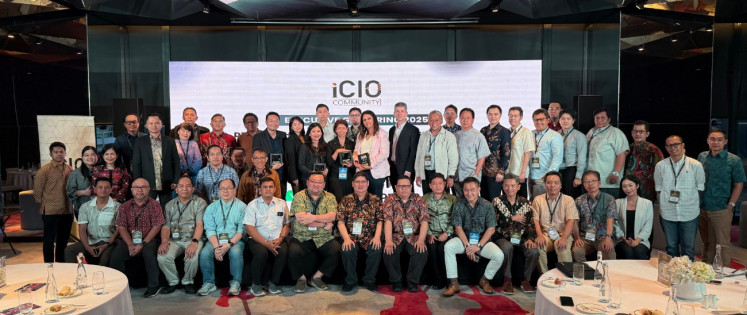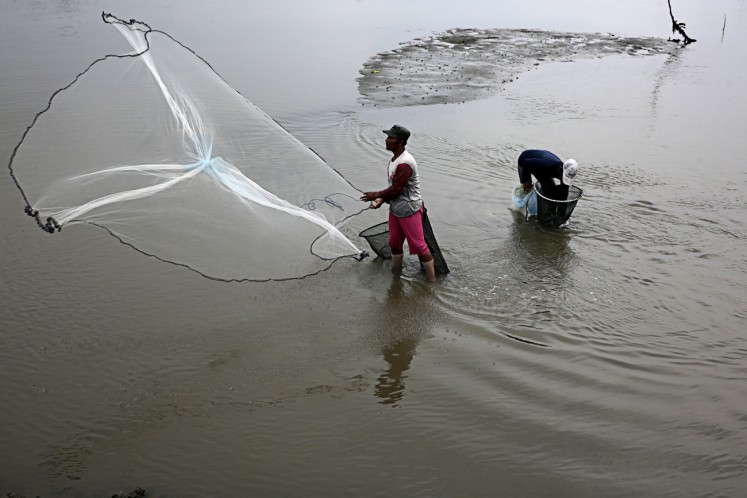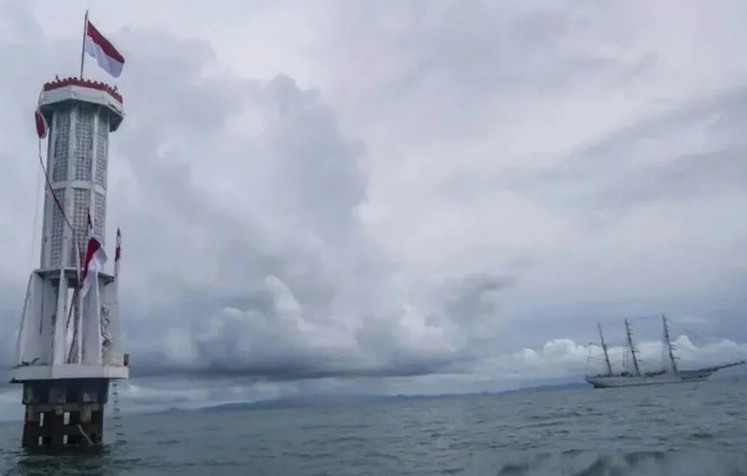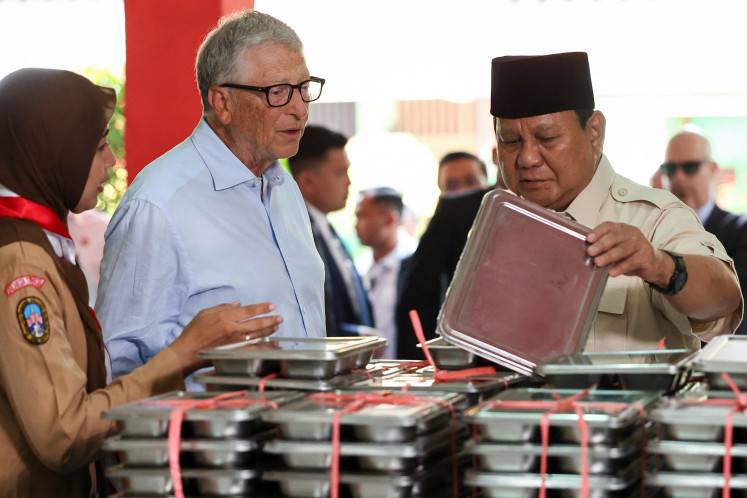Popular Reads
Top Results
Can't find what you're looking for?
View all search resultsPopular Reads
Top Results
Can't find what you're looking for?
View all search resultsMakepung: A glimpse of sociocultural rites in Jembrana, Bali
Change text size
Gift Premium Articles
to Anyone
B
ali, the Island of the Gods, is home to a wealth of unique and rich culture, steeped in traditions passed down from generation to generation.
While much of Bali’s cultural heritage can be widely enjoyed today thanks to tireless preservation efforts, one regency in particular is home to a hidden gem, the makepung.
Unique to the regency of Jembrana, the makepung emerged from the local tradition of farmers plowing the fields during planting season.
In the plowing activity, two buffaloes are used to pull a lampit plow ridden by a sais (jockey). While the main objective was to plow the fields, farmers often possessed the spirit of friendly rivalry, showing each other the strength of their respective buffaloes. Eventually, the activity morphed into the community-based competition known as the makepung.
The makepung developed around the 1930s, with the sais dressed in the style of historic Balinese royal soldiers by wearing destar (a traditional cloth cap), selendang (scarf) and pants, while tucking a traditional sword into the poleng (black and white checkered cloth) and going barefoot.
As the traditional makepung was held in the middle of muddy rice fields, sais were always caked with mud during and after the activity. In response, the makepung later began to be staged on a road in the rice fields.
In 1960, a dedicated makepung organization was formed, consisting of two teams named “Regu Ijo Gading Timur” under a red flag and “Regu Ijo Gading Barat” under a green flag. The equipment used was also modernized, with the plows swapped for miniature-sized carts decorated with Balinese carvings.
The sais continued to wear traditional clothes of a batik destar, long-sleeved shirts with selendang, and long pants, with the addition of footwear. However, the sword at the waist was no longer required.
On the surface level, the makepung may seem like a mere bull race, but as a form of community-based cultural heritage in Jembrana, the tradition has more socially complex dynamics at play.
Even so, the makepung started as entertainment for the farming community in Jembrana, born from farmers wanting to create a happy and fun atmosphere while still maintaining their productivity.
Beyond the role of the makepung as a down-to-earth competition and entertainment, the tradition serves as a forum where farmers in Jembrana can share their knowledge of agriculture and animal husbandry. This in turn fosters a sense of brotherhood and cooperation among the rice farmers.
At its core, the makepung is deeply rooted in the philosophy of the Balinese life order: a lifestyle based on how the farming community and the traditional agrarian communities in Jembrana interpret their life, which always interacts reciprocally with nature and the environment; a form of gratitude for the achievements in cultivating agricultural lands.
In time, the makepung has become a part of the identity of Jembrana as an area of cultural dynamics that is more heterogeneous and more open to change.
Looking deeper into the tradition, the makepung has various noble values of local wisdom, covering democratic values, sportsmanship, cooperation, divinity and the achievement of shared prosperity. In turn, these values are internalized by the community to mobilize participation in maintaining social harmony in a democratic and prosperous manner.
Author by:
- Ni Putu Meira Purnama Yanti, S.S., Mahasiswa Prodi MIL Pascasarjana Unwar
- Dr. I Gusti Ayu Agung Dian Susanthi, S.S., M.Hum., Dosen Prodi MIL Pascasarjana Unwar



